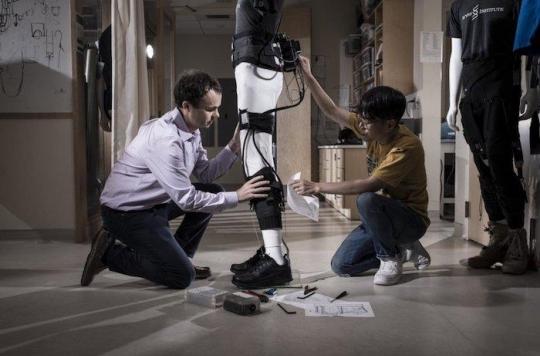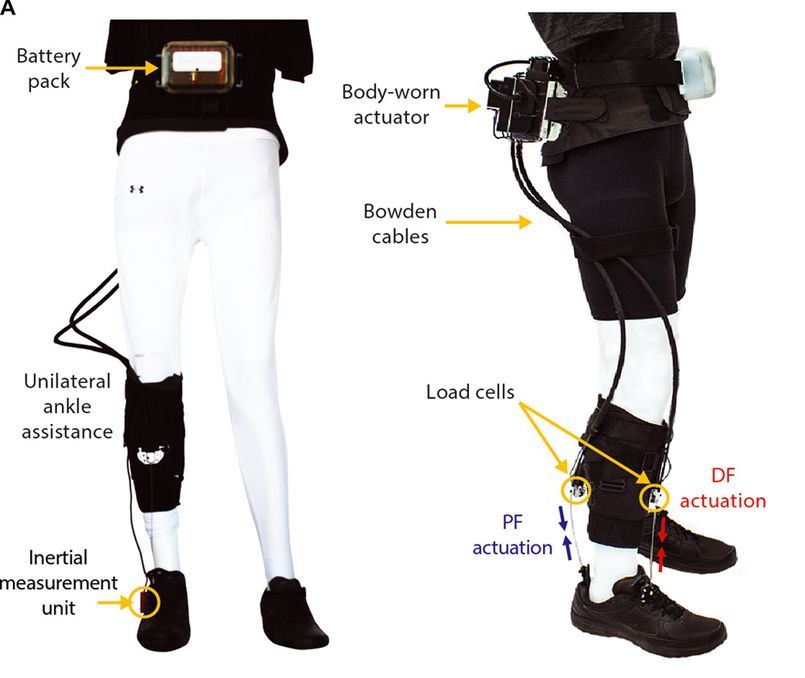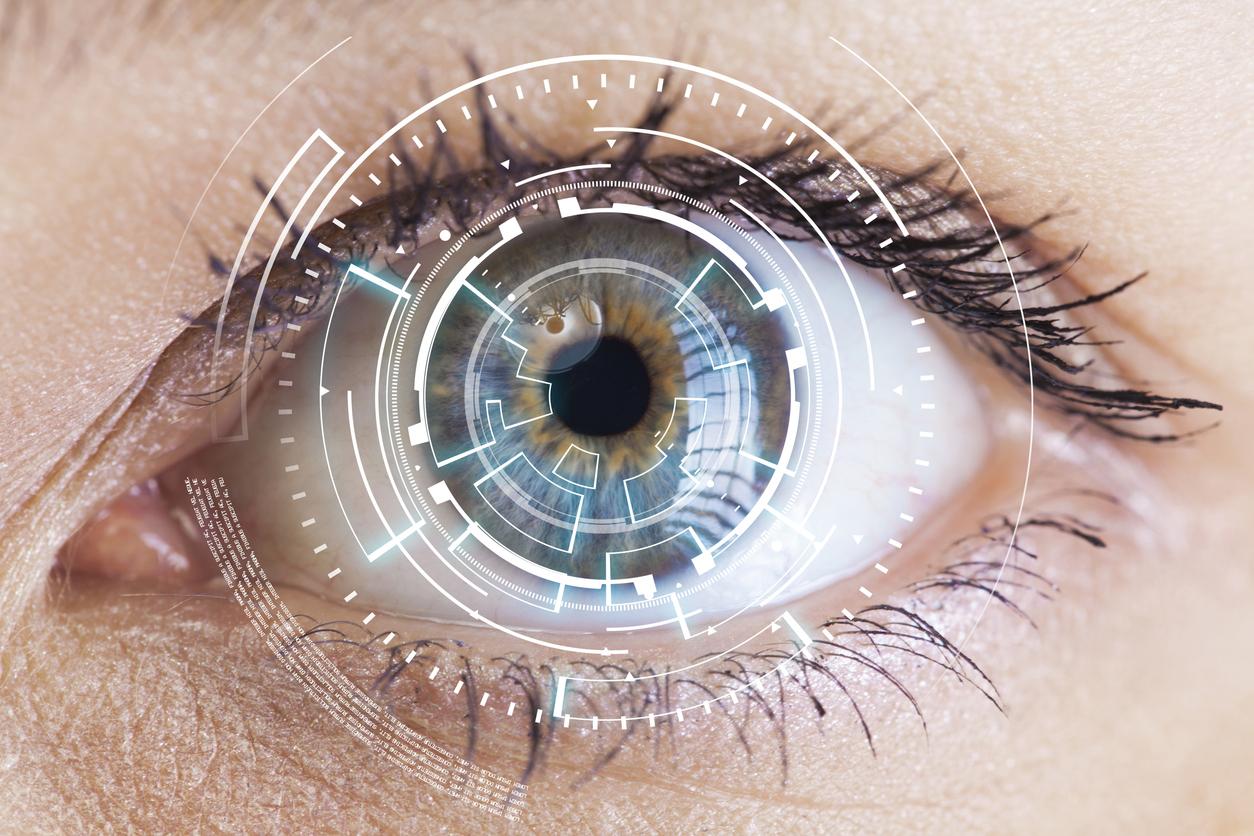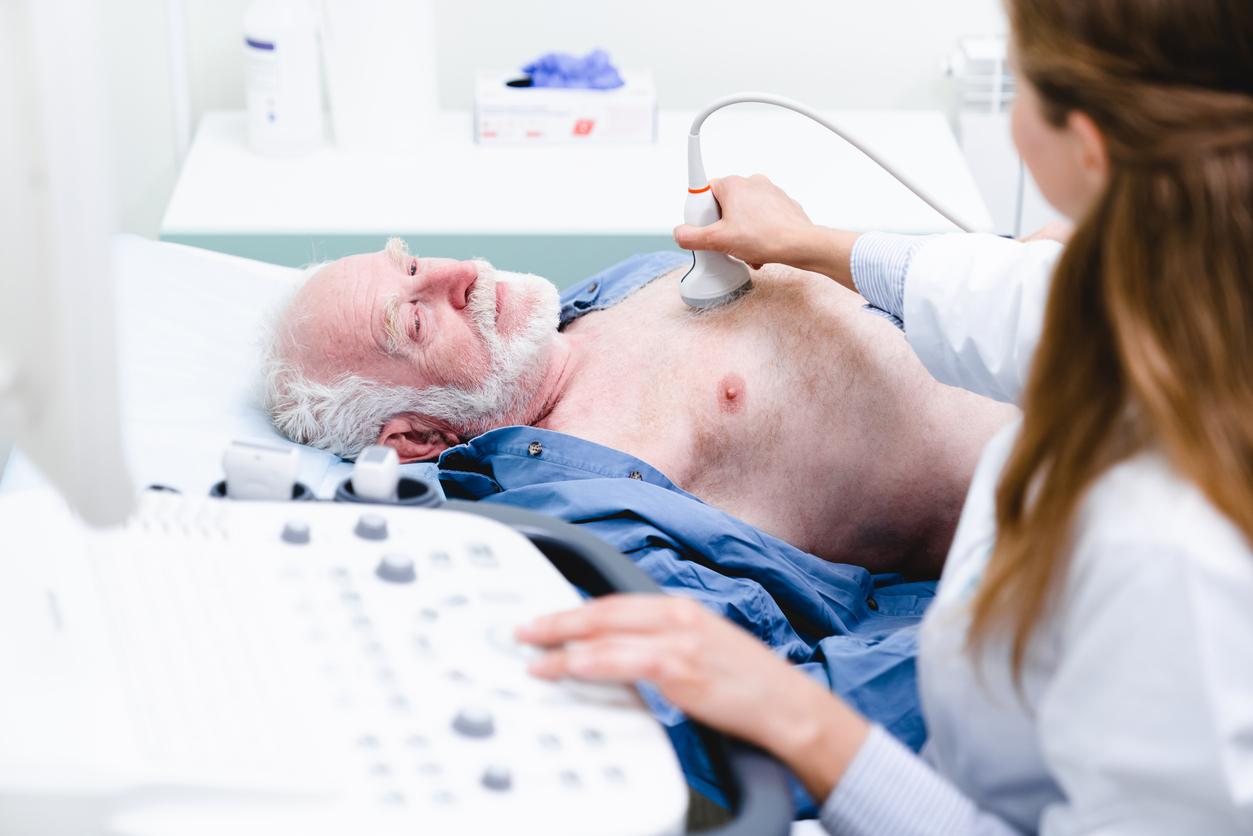Harvard researchers have developed a flexible and “almost” invisible exoskeleton. It could be worn under clothes, on a daily basis, during rehabilitation.

When we imagined the 21e century, fantasies often revolved around flying cars. But it may ultimately be the exoskeletons that will symbolize science fiction turned science. Whether it is to improve human capacities, or in medicine to compensate for physical deficiencies in patients.
Researchers at Harvard and Boston Universities (United States) have developed a flexible, single-leg device designed specifically to aid in rehabilitation in people who have had a stroke.
Alterations in gait
In 80% of cases, strokes leave after-effects, they recall in their article, published in the journal Science Translational Medicine. They cause hemiparesis, that is, motor deficits on one side of the body, often in the legs.
While walking, affected patients then develop strategies to compensate for the deficit: by turning the ankle at the moment of the impulse, by lifting the hip with each step or by making circular movements to bring the leg back, instead of bending the knee. .
And these strategies tend to leave traces even after rehabilitation. Stroke victims often have visible alterations in gait. “Current rehabilitation approaches fail because they do not restore mobility acceptable for everyday life,” said Terry Ellis, director of the Boston University Neurological Rehabilitation Center.
Under clothes
With other researchers, she therefore sought to produce an exoskeleton that can be worn on a daily basis, as an integral part of rehabilitation. It is flexible, slips over the affected leg, and is connected to a belt including a battery. And, according to the tests carried out, the system would reduce by at least 20% the asymmetry between the movements of the two legs during walking. The power of the push is also increased, limiting inappropriate movements in the ankles.

“This is an important step towards the development of rehabilitation exoskeletons that can be used outside of clinics, in everyday life,” said Lou Awad, co-author of the study. It is not a question of replacing the role of physiotherapy, but simply of bringing something more. “In an ideal future, patients in remission of stroke could wear flexible exoskeletons from the start of their rehabilitation, to prevent them from developing alterations in their gait,” adds Terry Ellis.
Exoskeletons for rehab may ultimately look more like soft clothing or orthotics than Iron Man’s suit.
.















